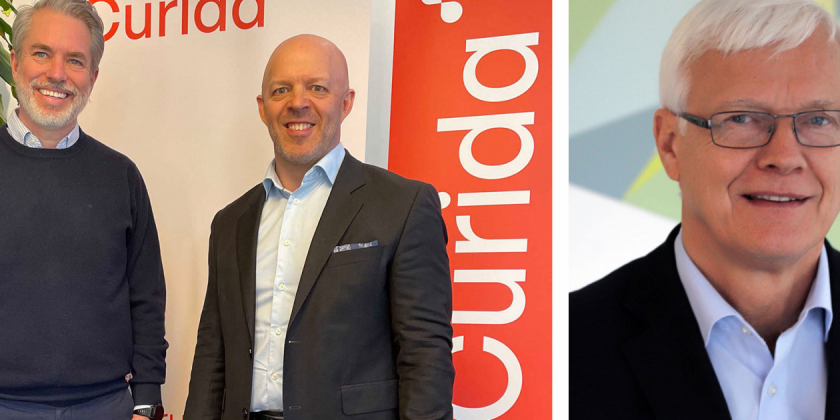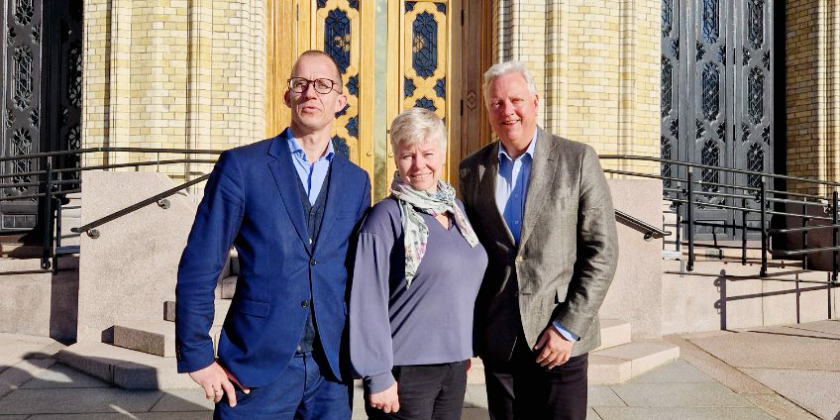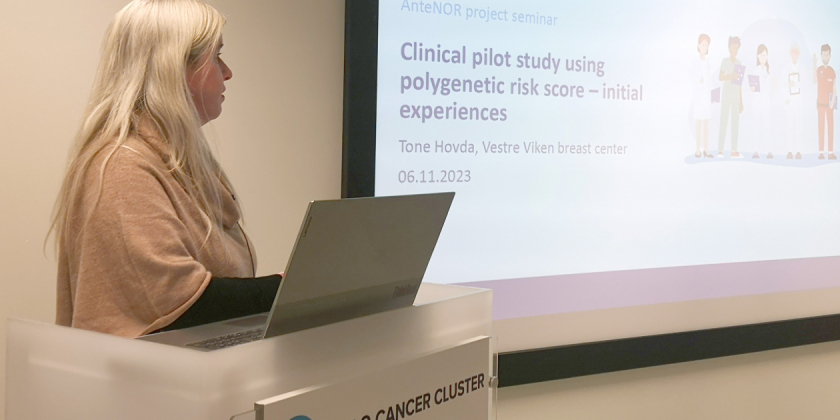Lytix and Curida: Growth and innovation
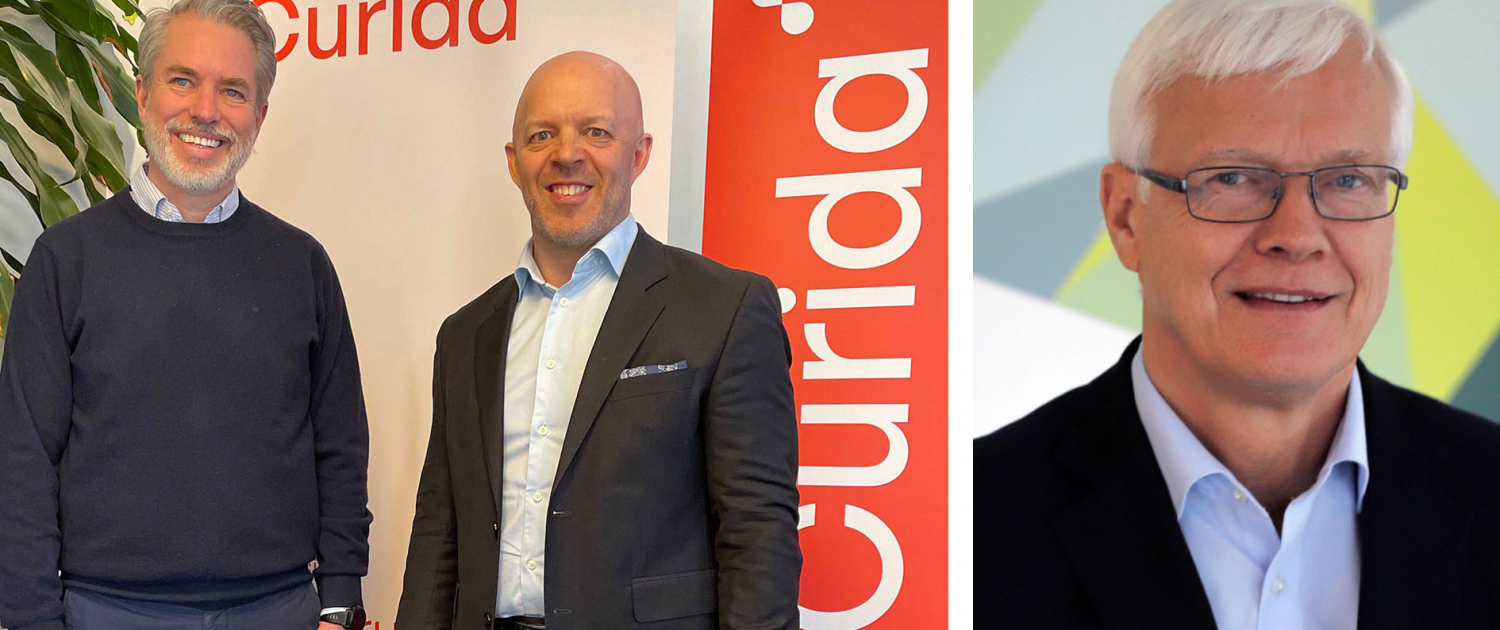
Two companies from the Oslo Cancer Cluster have recently made remarkable achievements in both research and economic growth in the dynamic landscape of biotechnology and pharmaceuticals.
Lytix Biopharma and Curida, both Norwegian-owned, have gained attention and acclaim for their innovative approaches and substantial contributions to the healthcare sector.
Lytix Biopharma: Pioneering Immunotherapy
Lytix Biopharma, a clinical-stage immuno-oncology company based in Oslo, Norway, has been making waves with its research and development efforts in cancer immunotherapy. Spearheaded by CEO Øystein Rekdal, the company has recently secured between NOK 50 and 55 million in new capital, showcasing strong support from existing shareholders and new investors alike.
One of Lytix Biopharma’s flagship projects is the development of LTX-315, a novel cancer immunotherapy drug candidate currently undergoing Phase II studies. Partnering with Verrica Pharmaceuticals, Lytix Biopharma aims to revolutionize the treatment of skin cancer with LTX-315, offering patients a non-surgical option with potentially reduced risks and improved outcomes.
Rekdal highlights the significance of the partnership with Verrica, stating, “The collaboration with Verrica shows that the company’s drug candidate has a commercial potential in one of the largest cancer indications globally.” Moreover, Lytix Biopharma’s innovative approach, addresses key challenges in cancer therapy, promising enhanced efficacy and reduced side effects compared to current treatments.
Read more about Lytix drug candidate LTX-315
(In Norwegian)Les mer om Lytix Biopharma i Healthtalk
Curida: Empowering Pharma and Biotech
In parallel, Curida, another Oslo Cancer Cluster member company based in Oslo, Norway, has secured a significant growth investment from Signet Healthcare Partners and existing shareholders. This substantial investment, totalling between 230M NOK and 260M NOK, underscores Curida’s commitment to expansion and innovation in pharmaceutical manufacturing.
Ole J. Dahlberg, former CEO and Chairman of the Board at Curida, expressed enthusiasm about the partnership with Signet, stating, “We are excited by the opportunity to further accelerate growth and improve products for our pharma and biotech customers in their work to deliver medicines and therapeutics to benefit patients.”
The appointment of Anders Larsson as the new CEO further strengthens Curida’s leadership team, bringing extensive experience in management and strategic development from the pharmaceutical industry. With a focus on aseptic and non-aseptic liquid manufacturing, as well as biologics processing, Curida aims to cater to the evolving needs of pharmaceutical and biotech companies worldwide.
Read more in their press release
Plans for the Future
Both Lytix Biopharma and Curida have ambitious plans for the future, aiming to advance their respective projects and expand their impact on the healthcare industry. For Lytix Biopharma, upcoming studies at the Norwegian Radium Hospital hold promise for testing LTX-315 in earlier-stage melanoma patients, potentially broadening the reach of their innovative immunotherapy.
Rekdal shared their overarching goal, stating, “Our overall goal is to bring multiple projects forward and partner for late-stage development and commercialisation.” Similarly, Curida looks to leverage Signet’s industry expertise and investment to enhance its manufacturing capabilities and continue delivering high-quality solutions to pharmaceutical and biotech partners globally.
The post Lytix and Curida: Growth and innovation first appeared on Oslo Cancer Cluster.
Sammen om superklynge
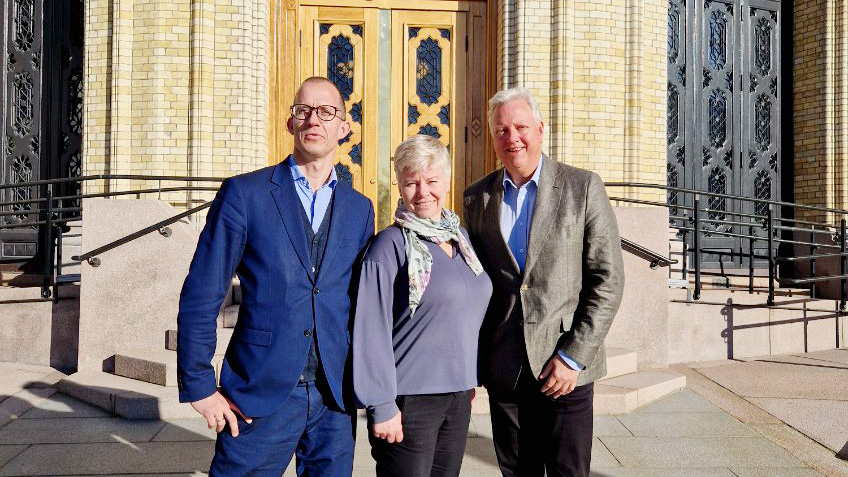 Oslo Cancer Cluster
Oslo Cancer Cluster
De fire helseklyngene gikk denne uka sammen om et høringsinnspill til Stortinget, der de foreslår å stå sammen om en superklynge innen helse.
English summary: The four health cluster leaders gave joint political input to the Norwegian parliament on 16 April 2024. They are suggesting to join forces for a supercluster in health.
Høringen, som fant sted 16. april 2024, var om Nasjonal helse- og samhandlingsplan 2024–2027 (Meld. St. 9, 2023-2024) – Vår felles helsetjeneste. I innspillet skriver de: “Klyngene er godt posisjonert for å bidra med 530 medlemmer i hele Norge; bedrifter, kommuner, helseforetak, brukerorganisasjoner, forsknings- og utdanningsinstitusjoner og investorer.”
Hele høringsinnspillet kan leses på Stortingets nettsider.
Superklyngesamarbeid
De fire nasjonale helseklyngene er Norway Health Tech, Norwegian Smart Care Cluster, The Life Science Cluster og Oslo Cancer Cluster.
Klyngelederne sa i høringen at de mener at Stortinget i sin innstilling til Nasjonal helse- og samordningsplan bør ha med følgende: Stortinget ber regjeringen legge opp til en videre, langsiktig og forsterket finansiering som sikrer at en superklynge innen helse kan gi et bedre og mer samordnet bidrag til helsetjenestene og helseindustrien i Norge.
– Helseklyngene samarbeider i dag om de store problemstillingene innen helsenæring, som finansiering, eksport og digitalisering. Med et superklyngesamarbeid kan vi ta dette til neste nivå, og samtidig fokusere på å videreutvikle det unike innovasjonspotensialet i Oslo Cancer Cluster, sier Ketil Widerberg, daglig leder i Oslo Cancer Cluster.
Verdiene de kan skape
Klyngene har sammen med Menon Economics utformet et dokument som går i dybden på verdiene de kan skape. Her kommer det blant annet fram at “helseindustrien bidrar til økt kvalitet i helsevesenet gjennom innovasjon, teknologi og nye metoder, og til reduserte utgifter til helse og omsorg ved å øke produktiviteten, forhindre sykdom eller redusere behovet for kostbar innleggelse. Økt kvalitet og produktivitet i helsevesenet er ekstremt viktig for Norge, fordi det allerede jobber 390 000 personer i helsevesenet, og fordi SSBs prognoser tilsier at antallet vil øke 760 000 personer i 2060 hvis vi ikke lykkes med å øke produktiviteten.”
Videre står det om klyngene at:
“Medlemmene i de fire klyngene er lokalisert over hele landet og dekker hele verdikjeden fra forskning, via produksjon av legemidler, medisinsk utstyr og e-helseprodukter, til helse- og omsorgstjenester – innenfor alle større sykdomsgrupper. Klyngeorganisasjonene er verktøy for medlemmenes felles behov; de er kollektive handlingsagenter.”
Her kan du lese hele Menon-dokumentet om Helseklyngenes rolle og verdiskapingsbidrag.
Ønsker offentlig-privat finansiering
I høringsinnspillet til Stortinget skriver klyngelederne:
“Våre møteplasser skaper koblinger og bygger tillit, vi sørger for infrastruktur og utstyr for testing og utvikling og gjør bedriftene rustet til å svare på både nasjonale og internasjonale behov, og derigjennom også bygge eksportindustri. Mange av bedriftene er allerede tett koblet på globale markeder, og vår jobb er også å skape flere gjennombrudd for norsk eksport. Potensialet er stort, og med riktig finansiering vil dette arbeidet kunne gjøres med større hastighet og i større omfang enn det som gjøres i dag. Resultatet vil være flere gode løsninger.”
Det felles utgangspunktet for et superklyngesamarbeid er fire modne klynger innen helseteknologi og livsvitenskap, som gjennom nærmere to tiår har produsert resultater gjennom nye løsninger til helse-Norge, og mer eksport og nye arbeidsplasser i industrien. Klyngene er i høringsinnspillet også enige om en levedyktig videre finansiering:
“Vårt neste steg handler om samordnet innsats for mer effektivt å bidra for våre medlemmer basert på den dybdeinnsikten og spesialiseringen vi har faglig, teknologisk og inn mot ulike sektorområder. Skal vi lykkes, må det fortsatt være et forpliktende offentlig og privat samarbeid, også når det gjelder finansiering. Det vil i praksis si at vår finansiering bør komme 50% fra offentlige og 50% fra privat.”
Her kan du se opptak fra høringen i Helse- og omsorgskomiteen 16. april 2024.
The post Sammen om superklynge first appeared on Oslo Cancer Cluster.
Results from breast cancer screening pilot
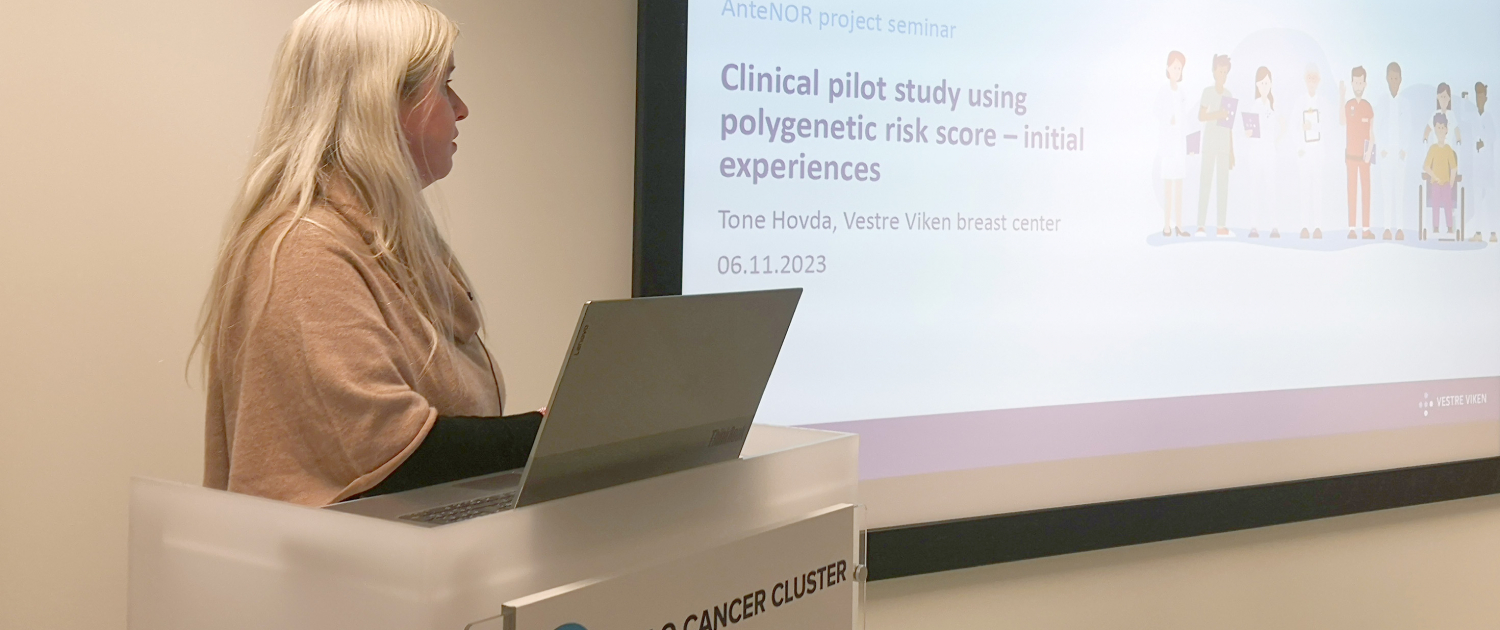
A clinical pilot for personalised risk-based breast cancer screening has been conducted as part of the AnteNOR project. Here are some of the results.
The pilot study that was part of the AnteNOR research project investigated the use of a genetic test assessing the participants’ polygenic risk score (PRS) for breast cancer in tailoring a more personalised mammographic screening. Further, women’s experiences with the test were explored.
“In total, 80 women aged 40-50 years were included in the pilot study. They were recruited among women referred for clinical mammography at the breast center in Vestre Viken in Norway”, said Tone Hovda, senior radiologist at Vestre Viken Hospital Trust, where the study was conducted.
AnteNOR has investigated how it will be possible to implement a more personalised screening programme for breast cancer in Norway, based on the individual’s genetic risk for disease.
Women with a prior diagnosis of breast cancer or premalignant breast disease were excluded, as were women who had already been through genetic counselling and testing due to family cancer history.
The participants submitted saliva samples that were sent to the project partner Antegenes in Estonia for DNA sequencing and calculation of the polygenic risk score using the AnteBC test developed by Antegenes.
Screening recommendations
The participants were then recommended for future mammographic screening based on the results of the PRS test. The participant’s 10-year breast cancer risk was assessed and compared to the 10-year breast cancer risk for average women of the same age.
Women with a 10-year risk lower to or equal to average were recommended to participate in the national mammography screening program, BreastScreen Norway, inviting women aged 50-69 to biennial mammography. Women with a relative risk higher than average were recommended to start biennial mammographic screening at an earlier age than 50 years, based on what age the risk of an average 50-year-old woman was reached.
Women with a relative risk double as large as the average risk were recommended annual mammography from the age they reached a double risk compared to an average 50-year-old woman.
Half had a higher risk
In total, 51% had a relative risk for breast cancer based on the PRS-test that was higher than the average population of the same age. These participants were recommended to start mammography screening at an earlier age than 50. 12% had a relative risk double as large as the average risk.
27% were referred to the Oslo University Hospital for more extended genetic testing due to family cancer history.
Family cancer history
At inclusion, the participants answered a questionnaire addressing family cancer history. Medical geneticists at Oslo University Hospital evaluated this information, and participants fulfilling national criteria based on family cancer history were referred for further genetic counselling and testing for hereditary cancer, independent of the results of the PRS test.
What the women experienced
All participants were invited to answer a follow-up questionnaire 6-9 months after the PRS testing, exploring the women’s experiences.
“The vast majority felt it reassuring to get information about their future risk for breast cancer and agreed that they would probably follow the recommendations regarding mammography screening given based on the tests”, said Tone Hovda.
The participants were given written information about the test results and recommendations, and the majority agreed that this communication was satisfactory.
The pilot study provided important information for future studies exploring personalised risk-based breast cancer screening using the polygenic risk score as a measure for stratification.
“We plan to publish the results with more detailed analyses, also including breast density, as soon as possible in a peer-reviewed journal.
“Polygenic risk score is promising as part of a more risk-based personalised screening program for breast cancer. Other risk factors as breast density and family history should probably also be included. We definitely need larger prospective screening studies to gain further knowledge to move towards more personalised breast cancer screening rather than the current “one-size-fits-all” screening,” said Hovda.
Read more in this previous article about the clinical pilot.
Sign up for the upcoming seminar Results from the AnteNOR project: Norway’s way towards precision prevention
About AnteNOR
The project partners of AnteNOR are Oslo University Hospital, the University of Oslo, Vestre Viken Hospital Trust, Oslo Cancer Cluster and Antegenes. The project has received funding from the Norway Grants Green ICT programme and is finalized this year.
The clinical pilot has received approval from the regional ethics committee and is registered in the database clinicaltrial.gov.

The post Results from breast cancer screening pilot first appeared on Oslo Cancer Cluster.

